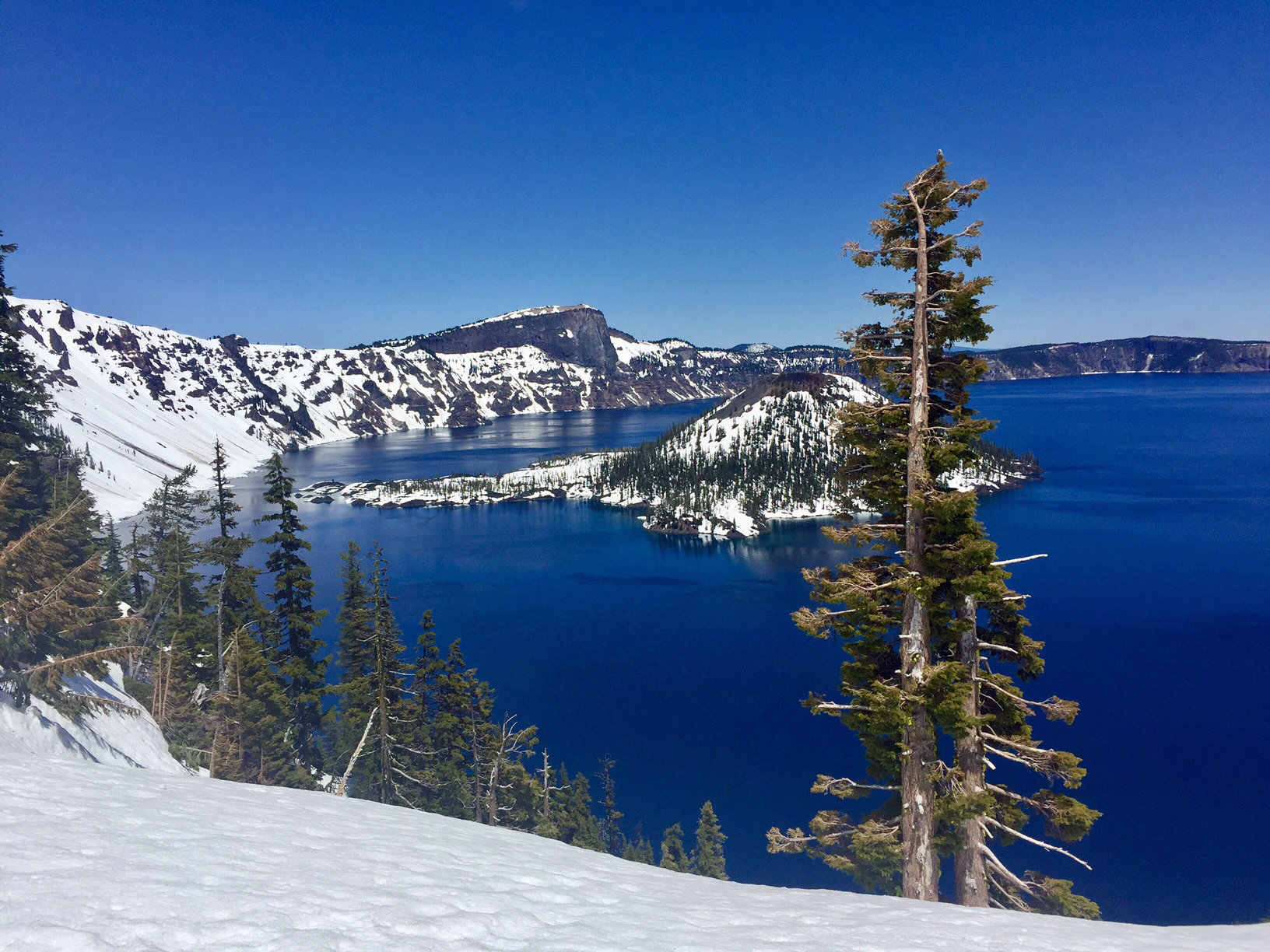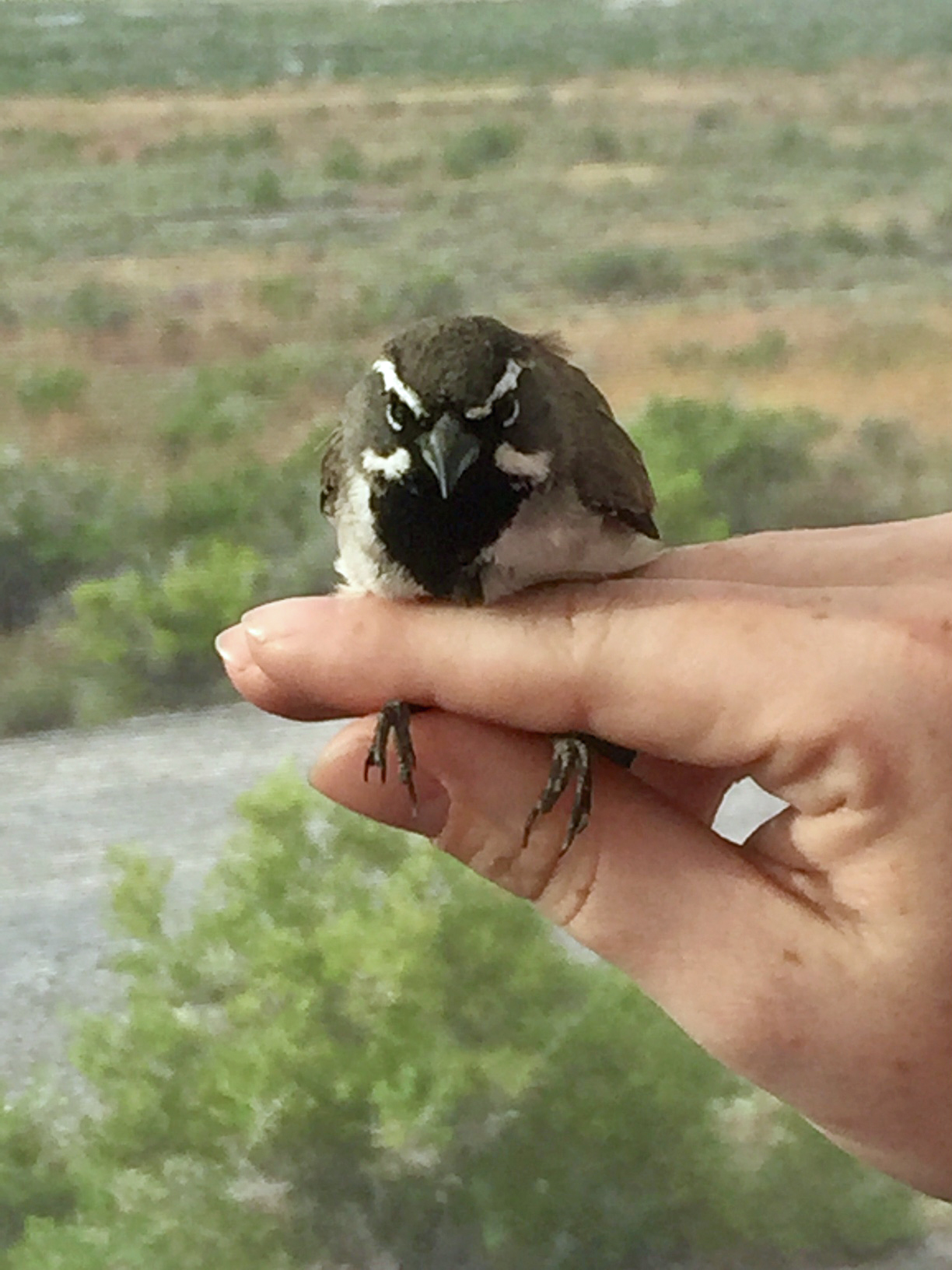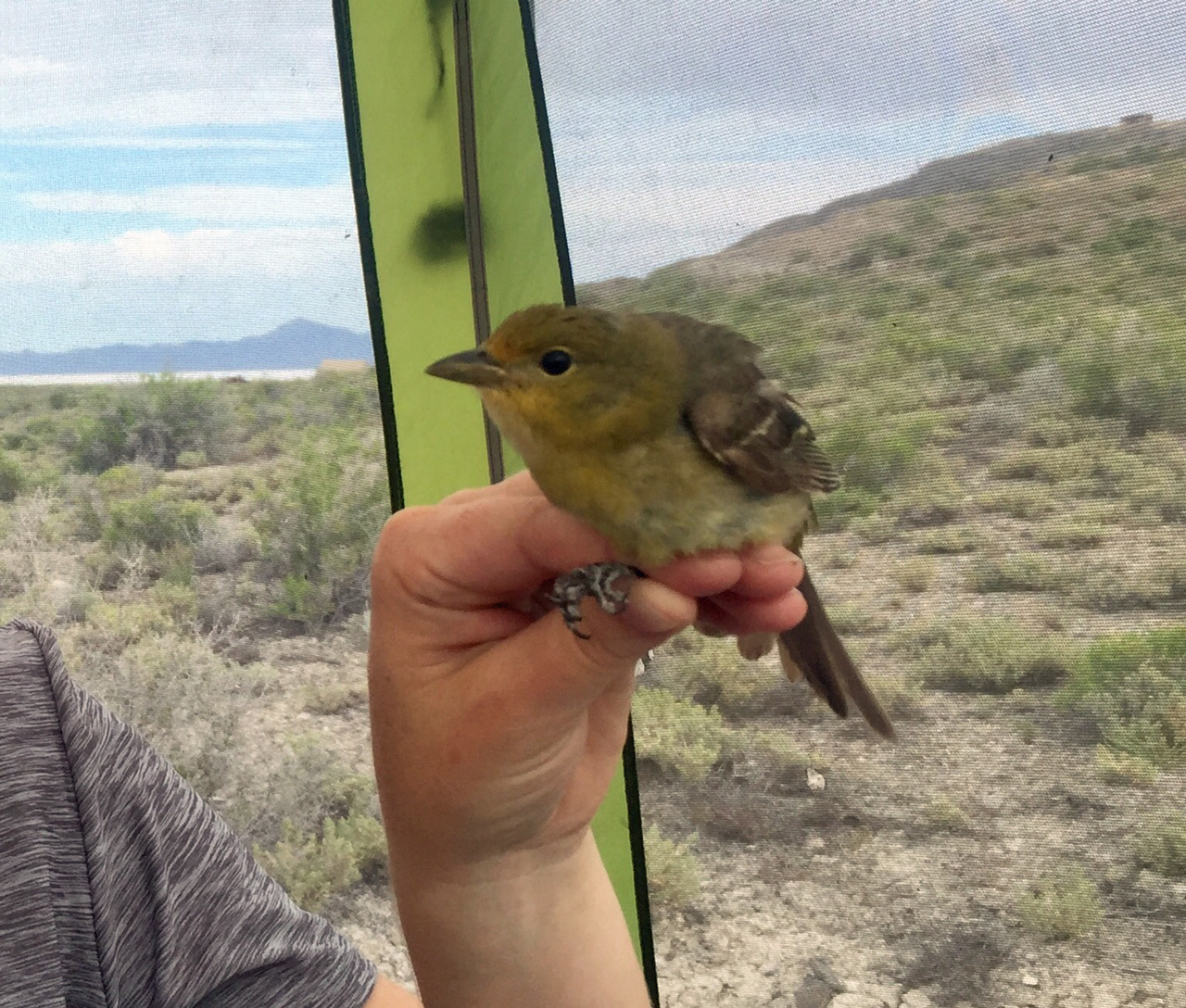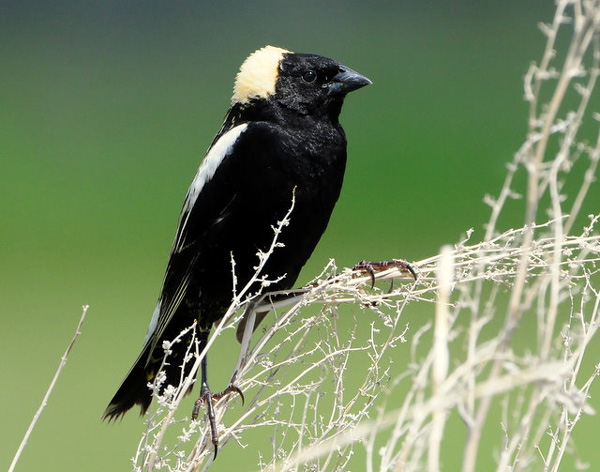Utah County Birders Newsletter
|
 |
Contents
June Meeting
Upcoming Field Trips
Captain's Log
Bird of the Month
Field Trip Report
No meeting in June. See field trip info below.
Saturday, June 10: South Utah County Hot Spots
7am-early afternoon
Meet at the Payson Walmart at 7am to carpool. We will visit Goshen Canyon, Warm Springs, and the Tintic Mountains/ Eureka area. Led by Dennis Shirley/ Keeli Marvel
Saturday, June 24: Dimple Dell
7am- early afternoon.
Meet at the American Fork Park and Ride (on the North side of Pioneer Crossing
and the West side of I-15 off the Main St. American Fork exit. Led by Steve Van
Winkle.
We are actively recruiting people to lead local half-day field
trips, any time, any place. If you would like to lead a field trip or if you
have any ideas for this yearís field trips, please contact Keeli at -
keeli.marvel@gmail.com
Utah County Birders
Captainís Log: June
2017
by Keeli Marvel
Howdy y'all! Just made it back from Oregon. I was hoping I would have news of
epic life bird achievements, but unfortunately, the birds were not on my
wavelength this trip. I drove up to the Portland area last week to spend some
time with my brand new baby niece, but decided to make a side trip on the way up
to check out Crater Lake National Park. With my destination in mind, I
researched the birds (of course!), and came up with three target birds: Hermit
Warbler, White-headed Woodpecker, and Black-backed Woodpecker. Crater Lake NP
was still covered in snow and hadnít opened its campgrounds yet, so I camped out
in Collier Memorial State Park, about 30 min away from the park. It was a very
nice campground with hot showers and nice campground hosts, if anyone finds
themself in that area in the future looking for a place to pitch a tent or park
an RV. That evening I went for a walk around the campground and picked up a
semi-lifer Hermit Warbler. I say semi because I am undecided yet whether Iím
actually going to count it. I could hear it calling, and it matched the call on
my ebird app exactly, but in the fading light I couldnít ever get a great look.
I realized something crucial on this trip. Birding the Pacific Northwest is
HARD. The trees are huge and tall and all the really interesting birds are way
up there singing their little hearts out, out of binocular reach. Well, thatís
not entirely true. But Iíll come back to that. So I thought, great, my lifer
Hermit Warbler! Surely Iíll get a better look later on during the trip. WRONG. I
was wrong. I heard a few throughout the trip, but never got a satisfying look.
So that was kind of strike one. Iíd read up on ebird about possible locations
for the woodpeckers. I checked those locations. No dice. The Rim Rd. in the
national park was still closed because it was covered in snow, but I hiked up a
two mile portion theyíd managed to plow and saw one Northern Flicker, some
Cassinís Finches, Stellerís Jays, and a Clarkís Nutcracker (in the top of the
tall tree in the photo below). Still no lifer woodpeckers. Sad day, but themís
the breaks, especially when it comes to birding! On my way home I hiked a loop
between Wahkeena and Multnomah waterfalls in Columbia River Gorge and had a very
confiding Orange-crowned Warbler close enough I could actually see the orange
crown! I also got great looks at a Pacific Wren. Turns out they love waterfalls
and cascade-y areas (probably not a surprise to most of you), and I heard
several along the hike.

Changing the topic a little bit, today I got to go out with the natural
resources crew at Hill AFB and mist net a few birds. We caught and banded
Black-throated Sparrows (see photo below), Brewerís Sparrows, a Sage Thrasher,
and a female Western Tanager (see second photo below). Migration appears to be
tapering off for the summer, and the resident birds are settling down for
hopefully another successful breeding season. The Western Tanager was quite a
fun bird to band but she was also very bitey (and really, can you blame her?).


Happy Birding!
 |
|
photo by Paul Higgins |
Bobolink
Class: Aves
Order: Passeriformes
Family: Icteridae
Genus & species: Dolichonyx oryzivorus
Article by Carol Nelson
Originally published May 2008
Any trip to the fields north of
Goshen during breeding season is not complete unless a birder can tick off the
Bobolink on his checklist. Its main territory is north and east of Utah, but we
are more than happy to have a few patches of grassland near us where it also
breeds.
This black 7Ē wonder with the conical beak, has white patches on his shoulders
and rump and a buff nape and back of head. (I think he needs the assistance of a
personal shopper myself, or at least an honest friend who can help him get a cap
a few sizes larger so it covers all his head and not just the back. Iíll bet he
bought that one at a garage sale.) The Bobolink has two complete molts each
year. All the new feathers it produces on its wintering grounds have yellow tips
making it look much liked a non-breeding bird. But in time the tips wear off and
the plumage is left with its dramatic breeding coloring. The Bobolink is
dichromatic, meaning the male and female look distinctly different. The female
looks more like a sparrow than it does its mate, but only during breeding
season.
The male wins his mates in the usual blackbird fashion. He drops his head,
ruffles his neck feathers, fans his tail, arches his wings displaying his
prominent white shoulder patches, and the females fall at his feet, so to speak.
Federal marshals do not interfere with this polygamous bird. Older Bobolinks may
have as many as four nesting females in their territory, but most of their time
and attention is devoted to the first family they produce, taking care of the
others as time and resources permit. Excuse me! That is a lousy show of
responsibility!! Aha, read on. They also engage in cooperative breeding, a
seeming rarity among long distant migrants. This is where more than two adults
participate in the feeding of the young at a single nest. The extra adults may
be male or female, may be previous offspring from one of the adults, may
actually be the birth parent of one or more of the young on the nest, or may
have lost their own young and still be ruled by their biological urge to feed.
The Bobolinkís clutch size is four to six eggs and their nest is on the ground
leaving it vulnerable to early field mowing.
The Bobolinkís flight is strong and undulating. They migrate to
southwestern Brazil, Paraguay and northern Argentina, with some stopping off in
Peru and Chile, a round trip of up to 12,500 miles. They migrate at night in
flocks called chains, guided by the earthís magnetic fields and the position of
the stars. Before their overseas flight, they fatten up on food in the
southeastern United States. When it was discovered that huge flocks, often at
night, were descending on rice fields to increase their stores of fat, they were
hated and killed. In one year there were 720,000 rice birds killed and sold as
food. In this plumped state restaurants served them as butter birds, a more
appetizing name than meadow wink, reed bird or skunk blackbird, which are other
names they are known by. Despite their consumption of great quantities of rice,
they are now considered a benefit to farmers. Their main staple is an assortment
of insects, and the seeds they subsist on belong mostly to weeds.
The Bobolinkís song has been described as ďa bubbling delirium of ecstatic music
that flows from the gifted throat of the bird like sparkling champagne,Ē and as
ďa tinkle of fairy music, like the strains of an old Greek harp.Ē Poets as
popular as Emily Dickinson and William Cullen Bryant have used their talents to
describe Bobolinks. We may also enjoy his song and attempt to describe him, but
any description thus far produced weakens at the actual sight of one in breeding
plumage sitting on a fence post with a swaying field of grass in the back
ground. This is what bird watching is about and we feel a sense of gratitude for
this kind of experience as we tick his name off on our checklists.
Reference: eNature.com Nature Guides, ConserveNature.Org, whatBird.com,
Bobolink: Bird of the Month - Smithsonian Migratory Bird Center,All About Birds:
Bobolink.
If you would like to
write an article for the Bird of the Month, please contact
Machelle -
machelle13johnson@yahoo.com
Click here for past 'Birds of the Month'.
Utah Lake North Shore Trail, June 3rd, 2017
By Keeli Marvel
Eight birders met this morning to walk the new trail along the North Shore of
Utah Lake. We walked about 2/3 of a mile east on the trail through some nice
wooded and open field habitat and tallied 31 species total. Our highlights
included both Western and Eastern Kingbirds, good looks at a couple of Western
Wood-Pewees, a House Wren, a Warbling Vireo, and several other species. We
didnít see any sign of the Scissor-tailed Flycatcher or Little Gull, so I think
it might be safe to say theyíve both moved on. Our complete checklist can be
found here. Thanks
to all who joined us!
Printable Version of this UCB Newsletter